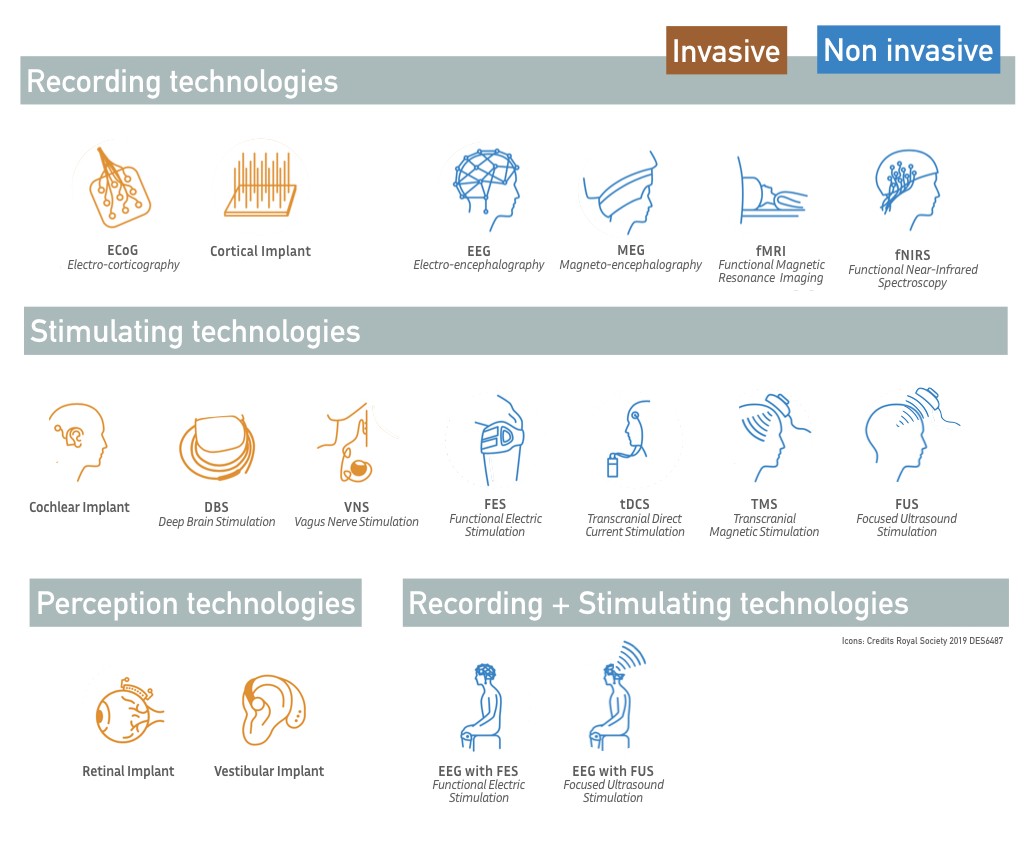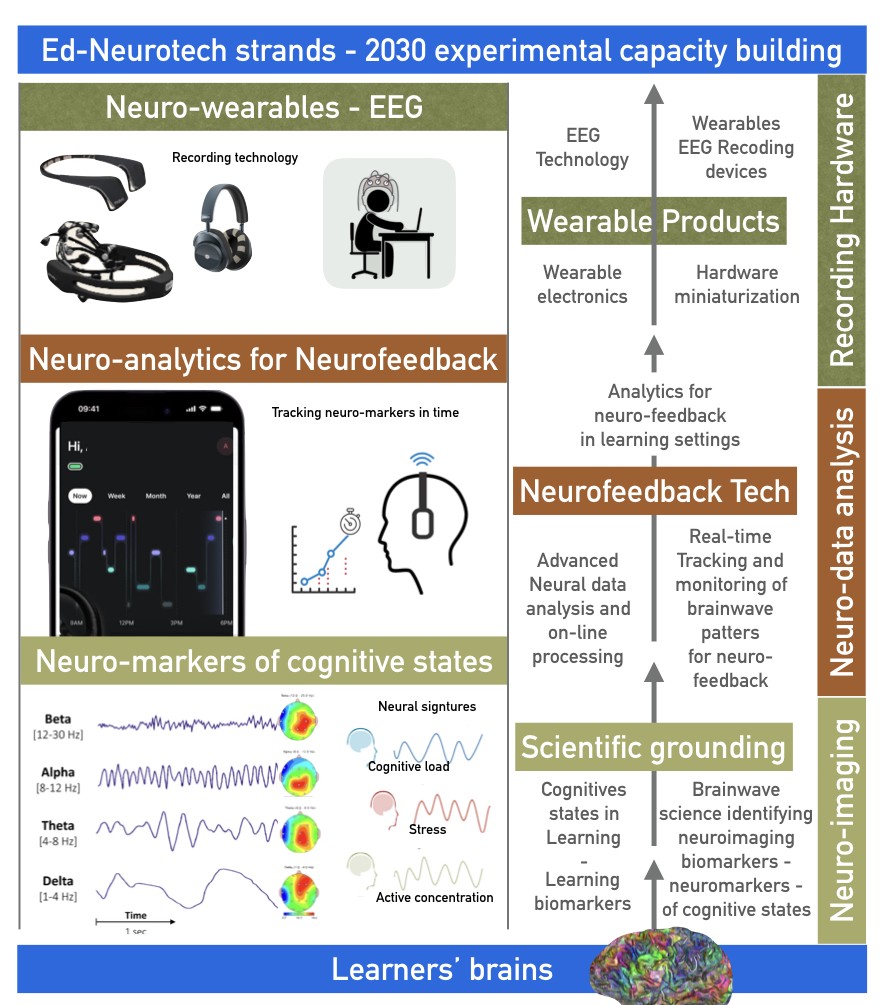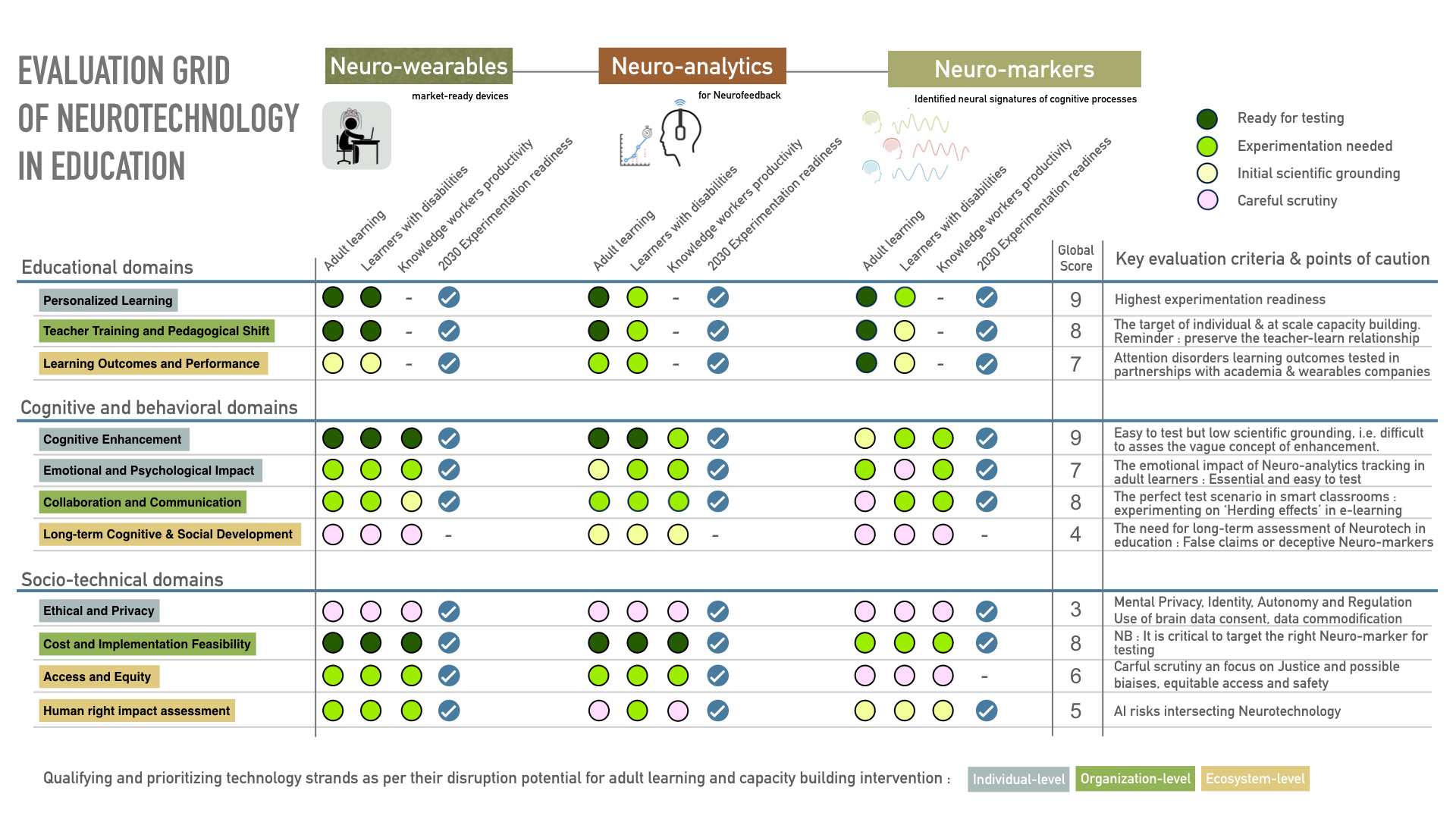Neurotechnology and the Future of Lifelong Learning
Neurotechnology and the Future of Lifelong Learning
Imagine being able to understand how people learn — not through tests or interviews, but by observing brain activity in real time. This is not science fiction. At the International Training Centre of the ILO (ITCILO), we are exploring how neurotechnology can support learning that is more adaptive, inclusive and human-centred.
Rethinking Learning Through Neurotechnology
Our world is changing rapidly. Technological disruption, digital transformation and a growing demand for upskilling are reshaping how we think about lifelong learning. At the same time, breakthroughs in neuroscience and wearable technology are giving us new insights on new ways to understand cognitive states like attention, fatigue or engagement — opening the door to a new paradigm in education.
What is Neurotechnology?
Neurotechnology refers to tools and systems that interact with the brain or nervous system. While it includes clinical implants and brain-stimulation tools, our research focuses on non-invasive, consumer-ready EEG headsets that detect electrical signals on the surface of the scalp.
Why Now?
Recent advances in AI and wearable tech have made it possible to collect and interpret brain data in everyday settings. These developments, combined with the urgency of making learning more inclusive, offer a strategic opportunity. Neurotechnology could improve outcomes for people with attention disorders, support teachers in real time, and generate feedback loops that enhance the learning experience.

How It Works – From Brain Signals to Learning Insights
Here’s the chain of technologies and concepts involved:
- Neuro-wearables: Devices (like EEG headsets) that collect electrical brain signals
- Neuro-markers: Brainwave patterns linked to cognitive states like focus, stress, or fatigue
- Neuro-analytics: Real-time tracking of these markers with AI data processing, detecting changes over time
- Neuro-feedback: Actionable insights delivered to the learner or teacher to guide the learning experience
Neurotechnology as a Foundational Technology
Neurotechnology is not an isolated innovation. It sits at the intersection of several foundational technologies that are reshaping the future of work and learning — including artificial intelligence, bio-sensing hardware, brain imaging, human-computer interfaces, and data governance.
At its core, neurotechnology relies on advances in AI and machine learning to decode complex brain activity into understandable, actionable patterns. This computational power is matched by new generations of miniaturized, flexible EEG sensors and wearable devices that can be used comfortably in everyday settings — not just in labs or hospitals.
It also overlaps with broader technology domains such as biometrics, signal processing, and privacy-enhancing computation, making it one of the most hybrid and fast-evolving fields of the current innovation landscape. In fact, neurotechnology exemplifies the convergence of foundational layers like data, compute, sensors and algorithms, which increasingly operate together in digitally enhanced learning environments.
At ITCILO, we view neurotechnology not just as a tool, but as a strategic enabler of digital transformation in education. This means thinking systemically about its implications — not only what it allows us to measure, but how it might influence pedagogical models, workforce development, cognitive autonomy, and learning equity in the years to come.

The proposed emerging technology taxonomy is reproduced below
How Do We Evaluate Neurotechnology for Learning?
As neurotechnology enters educational spaces, it becomes crucial to assess its value beyond novelty. Not all brain-sensing tools are created equal — and not every context is ready for their use. For this reason, ITCILO has developed a structured evaluation grid to guide institutions, educators and policymakers in understanding the pedagogical relevance, technical feasibility, and ethical acceptability of neurotechnology applications in learning environments.
The evaluation framework provides a set of critical dimensions and reflective questions. It helps determine whether a neurotechnology solution is not only functional, but also meaningful, inclusive, and aligned with long-term educational goals.
The grid below offers a practical tool to support informed, responsible decision-making when experimenting with brain-sensing systems in learning settings.

Evaluation based on readiness and field of action for Neuro-markers, Neuro-analytics, educational Wearables devices;
Capacity building recommendations that are presents in a nutshell under « Key evaluation criteria and points of caution ». Color code is Qualifying and prioritizing technology strands as per their disruption potential for adult learning and capacity building intervention at Individual-level, at Organization-level, or at Ecosystem-level.
Our Research at ITCILO
Evaluating Cognitive and Psychological Impact
Tracking mental states raises important questions: how does it affect learner motivation, anxiety or self-perception? We assess both the benefits (e.g. increased self-awareness, regulation of attention) and possible side effects (e.g. stress from monitoring). The goal is to document real-world implications for adult learners. We are also studying how to empower trainers to interpret brain data and whether it enhances their teaching decisions.
Developing a Neurotech Manifesto for Education
Emerging neurotechnologies raise ethical, legal and social questions that can’t be ignored. We are developing a manifesto to guide responsible use in education, based on human rights, neurorights and social justice principles. This includes issues like privacy, brain data consent, identity, and the right to cognitive liberty. It will also provide ITCILO with a strategic compass to ensure technology serves inclusion and pedagogical freedom.
What Can Neurotechnology Do for Learning?
Support learners with ADHD and attention difficulties
Learners with ADHD often struggle with maintaining attention across extended learning sessions. By using neurofeedback from EEG wearables, learners can receive real-time cues to reorient focus. This has the potential to complement existing support strategies. Moreover, it empowers all types of learners to become more self-aware and in control of their cognitive rhythm.
Provide real-time feedback to teachers
Teachers often rely on experience and intuition to gauge engagement. Neuro-analytics tools can provide objective data to complement this intuition, specifically in case of digital learning. Group-level synchrony signals, for example, can flag when collective attention and engagement is high or drifting. This allows trainers to dynamically adjust pacing or content delivery.
Enhance distance and e-learning environments
One major limitation of distance learning is the lack of visibility into learners' emotional and cognitive state. With wearable data and real-time monitoring, trainers can better detect fatigue and disengagement. This enables more humanised e-learning and enhances equity for remote learners.
Create responsive, personalised learning paths
If adopted and implemented responsibly, neuro-wearables and neuro-analytics make it possible to continuously assess a learner’s attention span, stress level, or engagement profile. By ensuring that human connection remains at the heart of learning, this allows for the creation of adaptive learning sequences over time. Content can be delivered based on the learner’s real-time state. This model opens the door to personalised, dynamic learning journeys.
Putting People First: Our Ethical Approach
Neurotechnology must be used to support — not replace — the people at the heart of learning. ITCILO is committed to ethical research, privacy-aware design, and inclusive applications that prioritise human dignity. The focus is on enhancing the teacher’s role, not automating it, and supporting learners in understanding their own cognitive states.
What Comes Next
Beyond controlled lab settings, we aim to test neurotechnology in diverse learning contexts — hybrid, digital, synchronous and asynchronous. This will help us understand how variables like culture, internet access, and group dynamics shape outcomes. The research will be accompanied by regular impact assessments and learner feedback cycles. Results will inform not only ITCILO programming, but also broader capacity development strategies at the ILO, and UN learning environments.
Original report and report brief by

